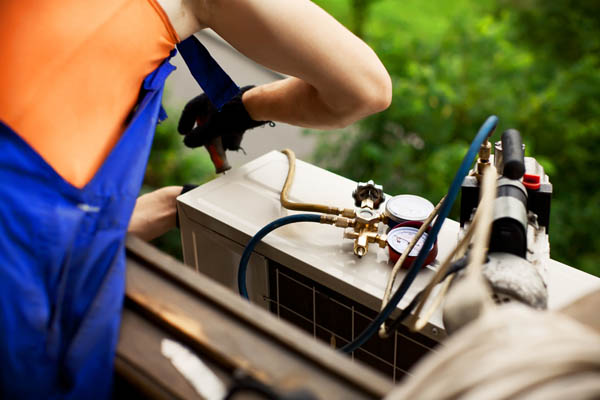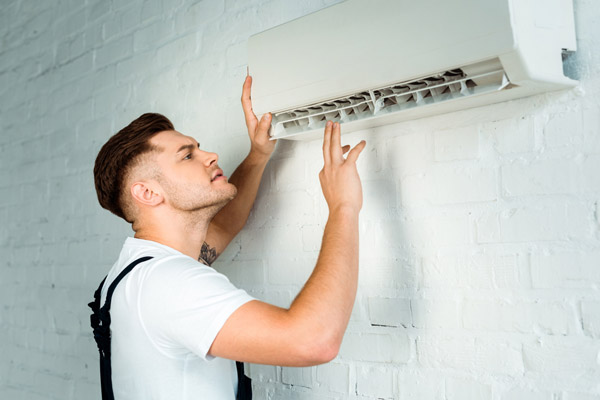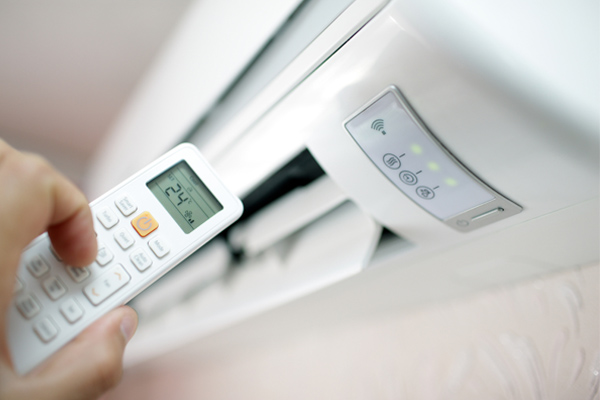Ductless Mini-Split Sizing Guide

When choosing a ductless mini-split system, one key factor to consider is sizing to ensure that the ductless unit has the correct capacity to create a comfortable indoor environment. Mini-split systems are high-efficiency HVAC equipment due to the use of inverter technology that allows the units to generate accurate levels of cooling and heating to ensure that temperature specifications are met and maintained.
Now, just because mini-splits have inverter technology does not automatically make them the correct size for your home. You still need to choose the unit with the right capacity by paying attention to ductless mini-split sizing.
Why Proper Ductless HVAC System Sizing Is Crucial
Contents [hide]

When the ductless mini-split system is properly sized, you are assured of comfort and energy savings. The system can also work properly so it can deliver efficient and effective cooling and heating. To achieve this, it is critical that you use a system with the correct BTU rating that meets your needs and comfort requirements.
What Is BTU?
BTU or British Thermal Unit refers to thermal energy measurement. It refers to how much heat is needed to increase the temperature of 1 lb. of water by 1° Fahrenheit. This means that one BTU has enough power to either heat or cool 1 lb. of water by a single degree.
Generally, larger rooms require a higher BTU rating. Mini-splits have BTU ratings that range from about 6,000 BTUs to 56,000 BTUs. If you are using BTU rating specifications as the basis for choosing your mini-split system, make sure that the heating capacity of the unit is significantly higher compared to its cooling capacity.
The simplest way to ensure that the sizing of a mini-split system is perfect for your home is to find one that is neither too big nor too small for the space you want to be cooled or heated. If you have a system installed that is over- or undersized, you will experience issues with comfort and with the overall functionality of your mini-split system.
Undersized Ductless Mini-Split

If the sizing of your ductless mini-split is too small, it will have problems with inefficiency. The unit will run continuously but it will fail to condition the air indoors effectively. As a result, the system will simply consume more energy without performing at its best. When this happens, you likely will experience hot and cold spots in your home. This is the result of the system’s inefficiency.
Another issue that comes with an undersized mini-split is that the system will be forced to work harder for a longer period just so keep up with the demand. Because the unit has to make up for the inadequacy of its sizing, it will be more susceptible to premature wear-and-tear. This exposes your system, leading to an early breakdown. As a result, you not only have to deal with higher energy costs but you also have to spend more on HVAC repairs.
Oversized Ductless Heat Pump Systems
Bigger mini-splits do not always make them a better choice. First of all, you buy more equipment than you actually need. This means that you can basically throw whatever energy savings you were hoping to get out of the window.
Second, an oversized mini-split system is more likely to short-cycle. Short cycling refers to the condition of an HVAC equipment wherein it repeatedly cycles on and off within a short period of time. Short cycling leads to premature wear-and-tear and causes your system to malfunction. Worst, your HVAC system could even fail completely before it even reaches its expected lifespan.
Lastly, you will likely experience problems with humidity. Since mini-split systems also work as dehumidifiers, an oversized system will be inefficient in removing humidity. As a result, your indoor environment will be humid, damp, and uncomfortable.
Properly Sizing Your Mini-Split

When choosing a ductless mini-split system for the home, keep in mind the factors that affect your choice of sizing. These will include the size or area of the room (in case of a single-zone application) or each room/space (in case of multi-zone application). The size of the outdoor compressor is going to be complementary but different from the sizing of the indoor unit/s installed in the indoor zones. After all, the individual areas of the rooms indoors may differ from one another. As such, make sure that the BTU rating for each indoor air handler is appropriately sized.
To avoid confusion in this area, make sure to ask a professional technician for advice on proper mini-split sizing. To determine sizing, your trusted technician is likely to perform the following steps:
- Calculate the area of the room in square feet. To do this, your HVAC technician will determine the length and width of the room/area and multiply them. So, let’s say you have a room that is 30′ long and 40′ wide. The product of these figures (30′ x 40′) is equal to 1,200 square feet.
- Calculate the approximate BTU rating. To do this, the technician will take the area of the room (in square feet) and multiply it by 25. Given the earlier example, we will take 1,200 sq. ft. and multiply it by 25. The approximate BTU rating you need to get for that room would be 30,000.
Keep in mind that this method of calculation works best with rectangular rooms. It also works well with triangle-shaped and circular-shaped rooms. If you have an irregularly-shaped room or area, you can ask a professional to help you. Asking a professional for help will ensure that you get the best advice and recommendation for your cooling and heating needs.
To give you an idea about what to expect in terms of BTU rating based on the area of a room, here is a chart you can use. Note that the figures are approximations only.
Ductless Mini-Split Sizing Chart
Factors That Impact Ductless Unit Sizing
Room size or area plays a huge part in helping you choose the BTU rating of your HVAC system. However, it is not the only factor you have to look at. You also need to consider environmental conditions and a host of external factors. These include:
Climate
Your local climate can and will affect your indoor temperatures. The sizing of your mini-split system will depend on the type of weather conditions you experience in any given season. For example, if your area experiences temperatures higher than 90° Fahrenheit, you need a system with a BTU rating that should be able to increase to a temperature by a minimum of 30% that figure.
Age And Insulation Of Your Home
If you have an older home, you need to take a look at the type of insulation you have. Keep in mind that newer homes more likely have better (and safer) insulation, thanks to revised building codes. If you have an older home that does not have good insulation, you need a more powerful mini-split system to ensure proper heating and cooling. The system should be capable of increasing the temperature by a minimum of 30% to achieve ideal indoor comfort. If you have a newer home, you will need a system with a lower BTU rating.
Ceiling Height
The height of your ceiling will affect the overall size of your rooms. High ceilings simply make rooms and areas larger. In most homes, the standard ceiling height is 8′. If your home’s ceilings are higher, consider increasing your BTU capacity by a minimum of 20%.
Other Factors
Aside from these external factors, there are also other factors you need to consider, such as:
- Doors And Windows: Homes with more doors and windows will have a different heating and cooling requirement from homes with fewer doors and windows. This is because these components of your home are not insulated and could allow air to escape.
- Direct Sunlight: Sunlight can heat up a room. If a room receives more direct light, it will require a higher sizing capacity than rooms on the west or north-facing sides.
- Kitchen: Kitchens are sources of heat, thanks to the presence of appliances such as ovens and stoves. These areas also tend to be open spaces, which means that they will require a mini-split with a higher BTU.
- Number of occupants: The human (and animal) body emits heat, which means that the more people residing in your home, the higher the heating and cooling needs are in the rooms that are occupied by more individuals.
- Lightbulbs: Lights emit heat and there are certain types of bulbs that generate more heat compared to others. If you have these types of light fixtures, consider a system with a higher BTU rating.
- Floor-Type: A carpeted room has better insulation than a room that is plain hardwood or tiles. Consider this when choosing the correct sizing for specific rooms.
Conclusion
Sizing is a critical consideration in choosing the best mini-split system for your home. You can determine the right rating using a process known as load calculation. This allows you to determine the correct amount of cool or warm air required to keep a comfortable and constant temperature in a specific area.
You could use online load calculators, of course, but if you want a more accurate sizing calculation, call your local HVAC professional. Qualified technicians are trained and experienced in finding the best solutions for you to ensure efficient and effective heating and cooling for your home.
Check Out One Of Our Ductless Installation Projects
Ductless Panels Add Heat And AC In An Addition To A Catasauqua PA Home
Call R.F. Ohl To Learn More About Ductless Heating & Cooling Systems

If you want to discover what a ductless HVAC system can do for you, call R.F. Ohl. Our experienced and professional certified technicians will help you determine the type of HVAC system that works best for your needs.
R.F. Ohl is one of the region’s leading full-service HVAC companies. We offer a wide range of HVAC services, from installations and tune-ups to repairs and consultations. Also, we can help you find different approaches and solutions to ensure that our services meet your requirements and budget. Call us today for a free, in-home estimate.
Click here to contact us today or give us a call at (610) 377-1098 if you have any questions.